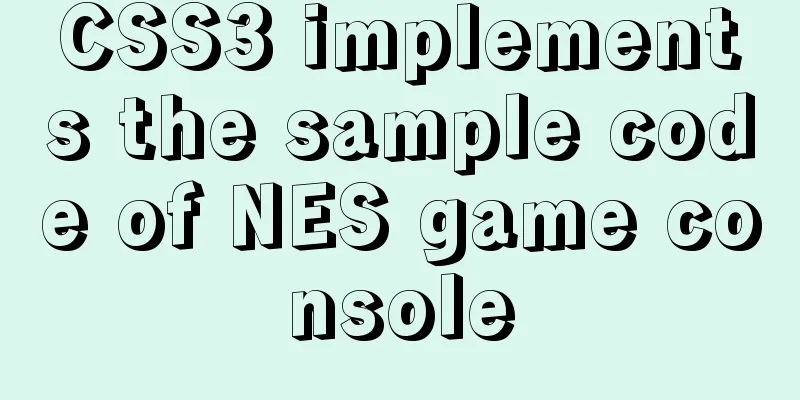Object-Oriented Programming with XHTML and CSS

|
<br />If only XHTML and CSS were object-oriented. . The sun should be rising from the north. However, we should look at everything from an OO perspective, and that will barely make up the numbers. In fact, someone proposed OO-style as early as a few years ago, but it can no longer be found. So how do we do it? Now everyone knows that CSS can be written like this: .G_G { /* xxxxxx */ } We can think of it as a prototype , or a class , -__-b seems to be a class, and then we need to "instantiate" an object in HTML, for example: <div class="G_G">Stupid ah ah</div> The element will use the corresponding CSS definition, but the corresponding class alone is not enough, because our page may apply this class in multiple places. In order to handle the " private " relationship well, change the previous code to: <div id="aoao" class="G_G">Stupid aoao</div> In this case, the element with ID aoao will apply the definition of the .G_G class, and can use the selector #aoao{} to enter the definition of private effects, which will not affect the public .G_G class. At the same time, the priority of the #aoao definition will be higher than that of .G_G, which is in line with the common sense that private definitions take precedence over public definitions^^.Since I used ID, a unique thing, the reuse of this privately defined thing became a problem (an ID can only appear once on a page, I don't know who said it, but it's the truth anyway). What if we want to implement multiple privatized things? Then we must implement " polymorphism ". Dig haha. Change the code again: <div class="G_G o_O">Stupid ah ah</div> One is "G_G" and the other is "o_O", but if we use .o_O{} , we can also define the element if the CSS is like this:.G_G {width:100%} .o_O {color:#123456} The elements will all be defined, and since definitions do not cascade, they will all be applied. If the code is like this, I wonder if it will be easier to understand. <div class="layout color">Not a fool, owl</div> .layout{width:100%} .color{color:#123456} Next, we need to implement " encapsulation ". The child selector should be used frequently, change the code: <div class="G_G"><span class="bendan">Stupid</span> Ouch</div> Although both .bendan{} and .G_G .bendan{} can be defined, the latter can only be applied to elements with class "G_G". We can simply understand .bendan{} as a global definition and .G_G .bendan{} as a local definition, which will be beneficial to the modularization of our XHTML and CSS. ^^The legendary "encapsulation" appears, and then follows.<div id="aoao" class="G_G o_O"><span class="bendan">Stupid</span> Aoao</div> Such code can produce countless changes. If you still don't understand it, start from the beginning. ^^ In fact, these are still a long way from true object-oriented. I am just learning the clickbait, but it can be used to understand the application of ID and class. |
<<: Docker stop stops/remove deletes all containers
>>: Example of making a butterfly flapping its wings with pure CSS3
Recommend
Implementation of Nginx configuration https
Table of contents 1: Prepare https certificate 2:...
Vue implements Tab tab switching
This article example shares the specific code of ...
Full HTML of the upload form with image preview
The upload form with image preview function, the ...
Super simple qps statistics method (recommended)
Statistics of QPS values in the last N seconds ...
The most complete package.json analysis
Table of contents 1. Overview 2. Name field 3. Ve...
uni-app WeChat applet authorization login implementation steps
Table of contents 1. Application and configuratio...
How to write a picture as a background and a link (background picture plus link)
The picture is used as the background and the lin...
Detailed explanation of javascript event bubbling, event capture and event delegation
1. Event bubbling : In the process of JavaScript ...
Docker deploys Mysql, .Net6, Sqlserver and other containers
Table of contents Install Docker on CentOS 8 1. U...
IIS configuration of win server 2019 server and simple publishing of website
1. First remotely connect to the server 2. Open S...
Detailed tutorial on how to monitor Nginx/Tomcat/MySQL using Zabbix
Table of contents Zabbix monitors Nginx Zabbix mo...
Detailed explanation of Linux zabbix agent deployment and configuration methods
1. Install zabbix-agent on web01 Deploy zabbix wa...
IIS7~IIS8.5 delete or modify the server protocol header Server
Requirements: Remove HTTP response headers in IIS...
A bug fix for Tomcat's automatic shutdown
Preface Recently, a Java EE web project that has ...









